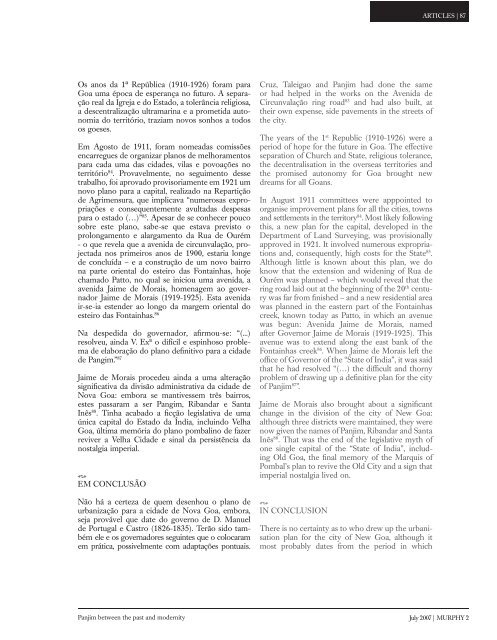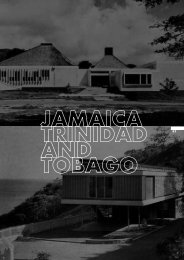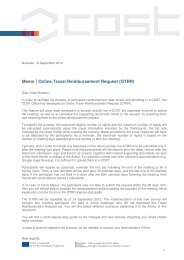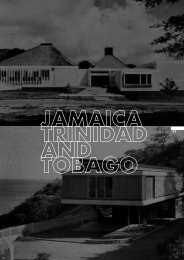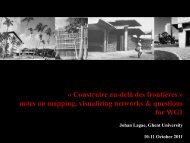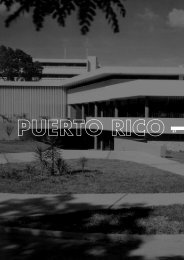PANJIM BETWEEN THE PAST AND MODERNITY
PANJIM BETWEEN THE PAST AND MODERNITY
PANJIM BETWEEN THE PAST AND MODERNITY
You also want an ePaper? Increase the reach of your titles
YUMPU automatically turns print PDFs into web optimized ePapers that Google loves.
ARTICLES | 87Os anos da 1ª República (1910-1926) foram paraGoa uma época de esperança no futuro. A separaçãoreal da Igreja e do Estado, a tolerância religiosa,a descentralização ultramarina e a prometida autonomiado território, traziam novos sonhos a todosos goeses.Em Agosto de 1911, foram nomeadas comissõesencarregues de organizar planos de melhoramentospara cada uma das cidades, vilas e povoações noterritório 84 . Provavelmente, no seguimento dessetrabalho, foi aprovado provisoriamente em 1921 umnovo plano para a capital, realizado na Repartiçãode Agrimensura, que implicava “numerosas expropriaçõese consequentemente avultadas despesaspara o estado (…)” 85 . Apesar de se conhecer poucosobre este plano, sabe-se que estava previsto oprolongamento e alargamento da Rua de Ourém- o que revela que a avenida de circunvalação, projectadanos primeiros anos de 1900, estaria longede concluída – e a construção de um novo bairrona parte oriental do esteiro das Fontainhas, hojechamado Patto, no qual se iniciou uma avenida, aavenida Jaime de Morais, homenagem ao governadorJaime de Morais (1919-1925). Esta avenidair-se-ia estender ao longo da margem oriental doesteiro das Fontainhas. 86Na despedida do governador, afi rmou-se: “(...)resolveu, ainda V. Exª o difícil e espinhoso problemade elaboração do plano defi nitivo para a cidadede Pangim.” 87Jaime de Morais procedeu ainda a uma alteraçãosignifi cativa da divisão administrativa da cidade deNova Goa: embora se mantivessem três bairros,estes passaram a ser Pangim, Ribandar e SantaInês 88 . Tinha acabado a fi cção legislativa de umaúnica capital do Estado da Índia, incluindo VelhaGoa, última memória do plano pombalino de fazerreviver a Velha Cidade e sinal da persistência danostalgia imperial.EM CONCLUSÃONão há a certeza de quem desenhou o plano deurbanização para a cidade de Nova Goa, embora,seja provável que date do governo de D. Manuelde Portugal e Castro (1826-1835). Terão sido tambémele e os governadores seguintes que o colocaramem prática, possivelmente com adaptações pontuais.Cruz, Taleigao and Panjim had done the sameor had helped in the works on the Avenida deCircunvalação ring road 83 and had also built, attheir own expense, side pavements in the streets ofthe city.The years of the 1 st Republic (1910-1926) were aperiod of hope for the future in Goa. The effectiveseparation of Church and State, religious tolerance,the decentralisation in the overseas territories andthe promised autonomy for Goa brought newdreams for all Goans.In August 1911 committees were apppointed toorganise improvement plans for all the cities, townsand settlements in the territory 84 . Most likely followingthis, a new plan for the capital, developed in theDepartment of Land Surveying, was provisionallyapproved in 1921. It involved numerous expropriationsand, consequently, high costs for the State 85 .Although little is known about this plan, we doknow that the extension and widening of Rua deOurém was planned – which would reveal that thering road laid out at the beginning of the 20 th centurywas far from fi nished – and a new residential areawas planned in the eastern part of the Fontainhascreek, known today as Patto, in which an avenuewas begun: Avenida Jaime de Morais, namedafter Governor Jaime de Morais (1919-1925). Thisavenue was to extend along the east bank of theFontainhas creek 86 . When Jaime de Morais left theoffi ce of Governor of the “State of India”, it was saidthat he had resolved “(…) the diffi cult and thornyproblem of drawing up a defi nitive plan for the cityof Panjim 87 ”.Jaime de Morais also brought about a signifi cantchange in the division of the city of New Goa:although three districts were maintained, they werenow given the names of Panjim, Ribandar and SantaInês 88 . That was the end of the legislative myth ofone single capital of the “State of India”, includingOld Goa, the fi nal memory of the Marquis ofPombal’s plan to revive the Old City and a sign thatimperial nostalgia lived on.IN CONCLUSIONThere is no certainty as to who drew up the urbanisationplan for the city of New Goa, although itmost probably dates from the period in whichPanjim between the past and modernityJuly 2007 | MURPHY 2


